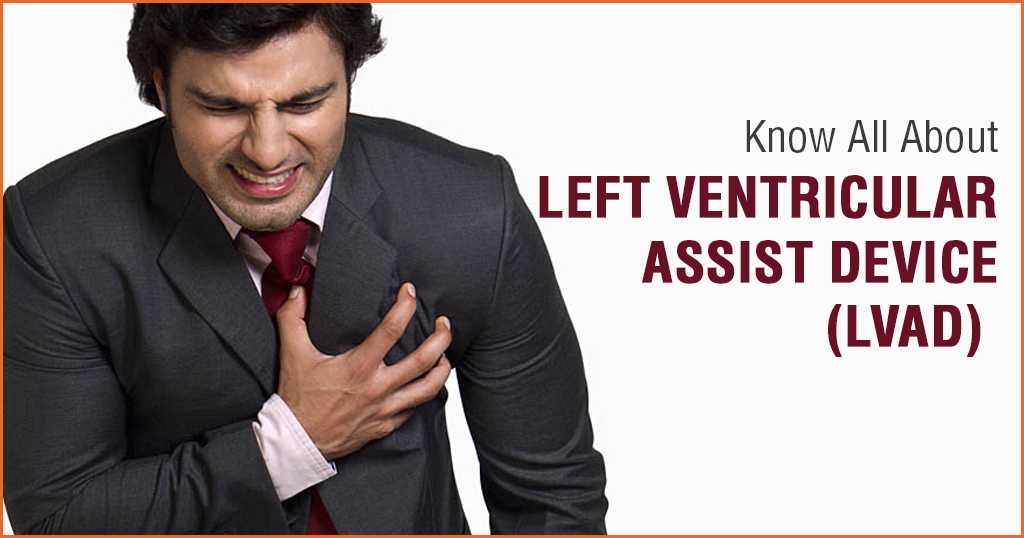

Introduction
Some diseases of the heart can decrease its ability to pump blood effectively. A Ventricular Assist Device, or VAD, is a device that can help the heart in pumping blood. A doctor may recommend a VAD as part of the treatment for heart failure. A VAD is a blood pump and it is called a ventricular assist device as it can help the ventricles (pumping chambers) of the heart in pumping blood. The Left Ventricular Assist Device (LVAD) assists the left ventricle of the heart.
How Does the Heart Work?
The heart has four chambers – two lower ventricles and two upper atria (singular=atrium). While the ventricles are the pumping chambers, the atria are the receiving chambers. The heart has four valves whose function is to ensure that blood flows in the correct direction through the heart.
The heart pumps blood to all the organs of the body. While the heart’s right side receives deoxygenated blood from the body and pumps it to the lungs, the left side of the heart receives oxygenated blood returning from the lungs and pumps it to the body.
Like any other muscle in the body, our heart needs a continuous supply of nutrients and oxygen in order to function well. However, the heart does not receive any oxygen or nutrients from the blood flowing through its chambers. Oxygen-rich blood is delivered to the heart through the right and left coronary arteries, which arise from the base of the aorta (the main artery supplying oxygenated blood to the circulatory system) and are embedded in the wall of the heart.
Heart Disease and VADS
Some heart diseases can decrease its pumping strength. When the heart does not pump blood as it should, fluid can accumulate in the lungs and other parts of the body. Such a situation is called congestive heart failure, as the lungs and body become ‘congested’ with excess fluid.
The symptoms of heart failure usually result from the heart’s inability to provide adequate blood flow to the body’s vital organs. These include exercise intolerance, shortness of breath and gastrointestinal symptoms (diarrhea, nausea vomiting).
Dietary changes and medicines can decrease the workload of the heart and improve its function. In a few cases, heart surgery like coronary artery bypass or a valve replacement, can also help ease symptoms and improve heart function. When medicines can no longer help, and other surgical options are exhausted, a doctor may recommend a Left Ventricular Assist Device (VAD).
Also Read About: Transcatheter Aortic Valve Replacement
Types of VADS
VADs can be used to support one or both of the heart’s pumping chambers (ventricles):
Unlike a completely artificial heart, the LVAD does not replace the heart. It just helps the heart do its job, which can mean life and death for people waiting for a heart transplant or for an individual whose heart needs a rest following open-heart surgery.
Who can have an LVAD?
The following are general indications for LVAD implantation:
A thorough medical evaluation is conducted to ensure that LVAD implantation is the best option for the patient. This will include blood tests and other diagnostic studies to evaluate how well all of the organ systems in the body are functioning.
How Does an LVAD Work?
The LVAD is a pump, like the heart and is implanted surgically just below the heart. While one end is attached to the left ventricle, the other end is attached to the aorta, the main artery of the body.
Blood from the heart flows into the pump. When sensors show that the LVAD is full, blood in the device is moved into the aorta. A tube, called the driveline, passes from the device through the skin. This tube connects the pump to the controller outside of the body and power source.
The LVAD and its connections are implanted during open-heart surgery. A power pack, a computer controller and a reserve power pack stay outside the body. A few models let an individual wear these external units on a belt. The power pack needs to be recharged every night.
What Are the Benefits of an LVAD?
The LVAD assists in restoring blood flow in an individual whose heart has been damaged by heart disease. This helps relieve symptoms such as shortness of breath or being constantly tired.
In some rare cases, LVAD helps the heart recover its normal functionality by giving it a chance to rest. In addition, the LVAD improves or maintains other organs, helps in doing exercise, and lets the individual go through cardiac rehabilitation.
Summary
A Left Ventricular Assist Device (LVAD) is a mechanical pump that helps damaged hearts to pump blood. An LVAD can provide improved blood flow and better organ function in patients with end-stage heart failure.
For heart transplantpatients, the LVAD can stabilize a patient’s condition, thereby allowing a longer period of time to await a donor’s heart. For patients who are not eligible for a heart transplant, an LVAD can provide long-term support for an enhanced quality of life.
As surgery to insert an LVAD involves significant risks, it is important that a patient reviews all potential risks, including potential alternatives, with the doctor before proceeding with LVAD implantation.
The content is reviewed and verified by our experienced and highly specialized team of heart specialists who diagnose and treat more than 400 simple-to-complex heart conditions. These specialists dedicate a portion of their clinical time to deliver trustworthy and medically accurate content

December 3, 2023